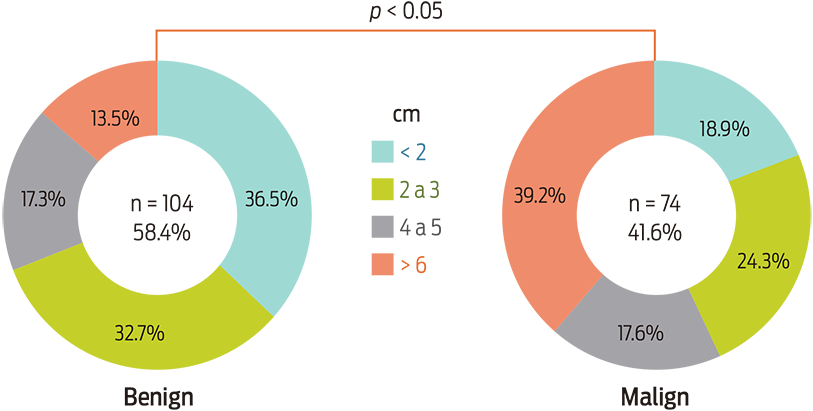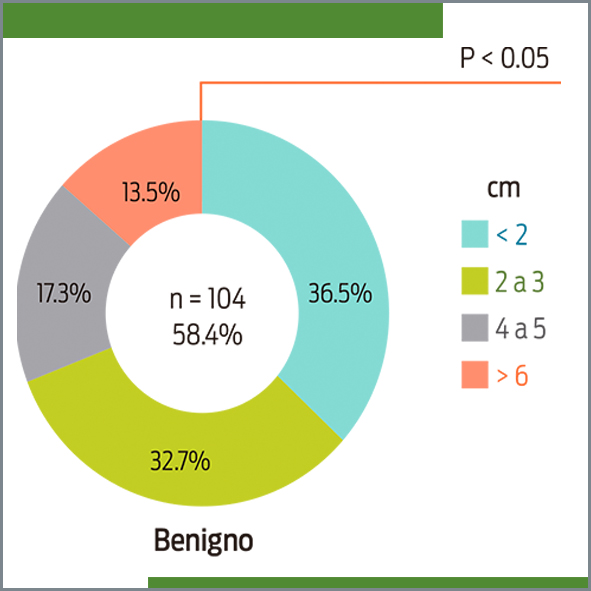Association of histological features with potential risk factors and survival in canine mammary tumors
Main Article Content
Abstract
Veterinaria México OA
ISSN: 2448-6760
Cite this as:
- Salas Araujo YJ, Aburto E, Alonso R, Márquez Alvarado AA, Corona Monjaras H, Romero Romero L. Association of histological features with potential risk factors and survival in canine mammary tumors. Veterinaria México OA. 2016;3(1). doi: 10.21753/vmoa.3.1.359
The epidemiological and clinicopathological features of canine mammary tumors may provide valuable information to facilitate analysis of the behavior of the disease and represent a potential tool for the study of breast cancer in women. The aim of this study was to associate the histological features of canine mammary tumors with potential risk factors and survival. One hundred and seventy-eight mammary tumors were collected from 80 female dogs. The statistical analyses consisted of a series of univariate studies and frequencies of the different study variables, such as a bivariate analysis with the Chi squared test (χ2), a relative risk and Kaplan Meier survival analysis, and a multiple correspondence analysis was used to correlate the tumor’s biological behavior with the dogs’ breed. Most patients were older than 8 years and had at least one malignant tumor, which was usually solitary and measured more than 6 cm; these patients had poor survival. The most frequent tumors were a complex adenoma, benign mixed tumor, carcinoma complex and mixed type carcinoma. The most commonly affected breeds were Poodle, Cocker Spaniel and Dachshund, and the breeds at the highest risk of tumor development were Cocker Spaniel, Labrador Retriever and German Shepherd. Overall, the data indicated that mammary tumors in dogs mainly affected older females with malignant tumors and that there were high mortality and short-term survival rates. However, the most commonly affected breeds were not necessarily the most susceptible. Our data do not support the hypothesis of an increased risk of canine mammary tumors in nulliparous female dogs.

Article Details
References
Benjamin A, Lee AC, Saunders WJ. 1999. Classification and behavior of canine mammary epithelial neoplasms based on life-span observations in Beagles. Veterinary Pathology, 36:426-436.
Bronden LB, Nielsen SS, Toft N, Kristensen AT. 2010. Data from the Danish veterinary cancer registry on the occurrence and distribution of neoplasms in dogs in Denmark. Veterinary Record, 166:586-590.
Casal J, Mateu E. 2003. Tipos de muestreo. Revista de Epidemiologia de Medicina Preventiva, 1:3-7.
Cassali G, Gobbi H, Malm C, Schmitt F. 2006. Evaluation of accuracy of fine needle aspiration biopsy for diagnosis of canine mammary tumors: Comparative features with the human tumors. Cytopathology, 17:1-7.
Chang S, Chang C, Chang T, Wong M. 2005. Prognostic factors associated with survival two years after surgery in dogs with malignant mammary tumors: 79 cases (8-2002). Journal of American Veterinary Medical Association, 227(10):1625-1629.
Coffey DS, Walsh PC. 1990. Clinical experimental studies of benign prostatic hyperplasia. Urologic Clinics of North American, 17:461-475.
Costa PS, Santos NC, Cunha P, Cotter J, Sousa N. 2013. The use of multiple correspondence analysis to explore associations between categories of qualitative variables in healthy ageing. Journal of Aging Research, Article ID 302163. DOI: 10.1155/2013/302163.
Diessler ME, Castelland MC, Portianskyl EL, Burns SL, Idiar JR. 2009. Invasión vascular, expresión del receptor 2 del factor de crecimiento de endotelios vasculares (VEGFR-2) y densidad de microvasos en carcinomas mamarios de perras. Valor pronóstico. Ciencias Morfológicas, 11(1):15-24.
Egenvall A, Bonnett BN, Ohagen P, Olson P, Hedhammar A, von Euler H. 2005. Incidence of and survival after mammary tumors in a population of over 80,000 insured female dogs in Sweden from 1995 to 2002. Preventive Veterinary Medicine, 69:109-127.
Ferreira E, Bertagnolli AC, Cavalcanti MF, Schmitt FC, Cassali GD. 2009. The relationship between tumour size and expression of prognostic markers in benign and malignant canine mammary tumours. Veterinary Comparative Oncology, 7:230-235.
Fonseca CS, Daleck CR. 2000. Neoplasias mamárias em cadelas: influencia hormonal e efeitos da ovariohisterectomia como terapia adjuvante. Ciência Rural, 30:731-735.
Gama A, Alves A, Schmitt F. 2008. Identification of molecular phenotypes in canine mammary carcinomas with clinical implications: Application of the human classification. Virchows Archives, 453(2):123-132.
Goldschmidt M, Peña L, Rasotto R, Zappulli V. 2011. Classification and grading of canine mammary tumors. Veterinary Pathology, 48:117-131.
Im KS, Kim NH, Lim HY, Kim HW, Shin JI, Sur JH. 2014. Analysis of a new histological and molecular-based classification of canine mammary neoplasia. Veterinary Pathology, 51(3):549-559.
Kuldip G, Naresh K, Sanjeev K, Jitender M, Shashikant M, Raghunath M, et al. 2012. Epidemiological studies on canine mammary tumour and its relevance for breast cancer studies. IOSR Journal of Pharmacy, 2(Issue 2):322-333.
Misdrop W, Hart AAM. 1976. Prognostic factors in canine mammary cancer. Journal of The National Cancer Institute, 56(4):779-785. doi:10.1093/jnci/56.4.779
Oliveira LO, Oliveira RT, Loretti A, Rodrigues R, Driemeier D. 2003. Aspectos epidemiológicos da neoplasia mamária canina. Acta Scientiae Veterinariae, 31:105-110.
Perez Alenza D, Rutteman GR, Pena L. 1998. Relation between habitual diet and canine mammary tumors in a case-control study. Journal of Veterinary Internal Medicine, 12:132-139.
Ressel L, Puleio R, Ruggero Loria G, Vannozzi I, Millanta F, Caracappa S, et al. 2013. HER-2 expression in canine morphologically normal, hyperplastic and neoplastic mammary tissues and its correlation with the clinical outcome. Research in Veterinary Science, 94:299-305.
Rivera P, Melin M, Biagi T, Fall T, Häggström J, Lindblad-Toh K, von Euler H. 2009. Mammary tumor development in dogs is associated with BRCA1 and BRCA2. Cancer Research, 69:8770-8774.
Rojas C. 2008. Lactancia materna y cáncer de mama: Un estudio caso-control en pacientes del Hospital Nacional Arzobispo Loayza, Lima-Perú. Anales Facultad de Medicina, 69(1):22-28.
Salas Y, Márquez A, Diaz D, Romero L. 2015. Epidemiological study of mammary tumors in female dogs diagnosed during the period 2002-2012: growing animal health problem. PLOS ONE, 10(5):e0127381. DOI: 10.1371/journal.pone.0127381.
Schneider R, Dorn CR, Taylor DO. 1969 Factors influencing canine mammary cancer development and postsurgical survival. Journal National Cancer Institute, 43:1249-1261.
Sonnenschein EG, Glickman LT, Goldschmidt MH, McKee LJ. 1991. Body conformation, diet, and risk of breast cancer in pet dogs: A case-control study. American Journal Epidemiology, 133:694-703.
Sorenmo K. Canine mammary gland tumors. 2003. Veterinary Clinical Small Animal, 33:573-596.
Sorenmo KU, Shofer FS, Goldschmidt MH. 2000. Effect of spaying and timing of spaying on survival of dogs with mammary carcinoma. Journal of Veterinary Internal Medicine, 14:266-270.
Thomas A. Hematoxilina y eosina. Métodos histotecnológicos. 1995. Registro de Patología de los Estados Unidos de América (ARP) y el Instituto de Patología de las Fuerzas Armadas de los Estados Unidos de América (AFIP), 55-58.
Wey N, Gutberlet K, Khon B. 2000. Mammatumore bei der huding: Hormolle abhangigkeit unter besonderer berucksichtigung von 17 ß ostradiol und progesteron. Kleintierpraxis, 45:19-31.
Yu FL. 2002. 17Beta-estradiol epoxidation as the molecular basis for breast cancer initiation and prevention. Asia Pacific Journal of Clinical Nutrition, 11(Suppl 7):S460-S466.
Zatloukal J, Lorenzová F, Tich A, Neâas H, Kecová P, Kohout. 2005. Breed and age as risk factors for canine mammary tumours. Acta Veterinaria Brunensis, 74:103-109.
License

Veterinaria México OA by Facultad de Medicina Veterinaria y Zootecnia - Universidad Nacional Autónoma de México is licensed under a Creative Commons Attribution 4.0 International Licence.
Based on a work at http://www.revistas.unam.mx
- All articles in Veterinaria México OA re published under the Creative Commons Attribution 4.0 Unported (CC-BY 4.0). With this license, authors retain copyright but allow any user to share, copy, distribute, transmit, adapt and make commercial use of the work, without needing to provide additional permission as long as appropriate attribution is made to the original author or source.
- By using this license, all Veterinaria México OAarticles meet or exceed all funder and institutional requirements for being considered Open Access.
- Authors cannot use copyrighted material within their article unless that material has also been made available under a similarly liberal license.



